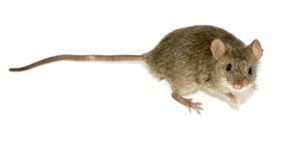When I encounter my cat fixated on specific locations in my kitchen, her behavior shows me that she has heard some mice in those areas. In fact, mice have been attributed as a reason that cats became companions to humans. Mice start gathering and reproducing so cats followed the food source and hunted the rodents, thus endearing themselves to humans, who were storing food for their own use. However, new evidence described in Scientific Reports has shown that mice have been associated with humans even before grain storage was widespread. In fact, by making our dwellings comfortable, we also created an inviting place for mice to live.
How does a scientist figure out how long the house mouse has been hanging around humans? Similar to investigating human evolution, teeth and other dental remains were the source of information. Starting with 829 Mus species samples from 43 different locations in southwestern Asia and southeastern Europe that spanned nearly 40,000 years, the shape of the first lower molar was used to define a taxonomy of mice. However, only a subset of these samples could be used in multiple analyses including radiocarbon dating to place the mouse archaeological samples in time and mitochondrial DNA testing, specifically cytochrome b amplification, as another taxonomy source.
Some of the oldest samples were from the Iranian Plateau, fossils in caves that suggested debris accumulated from a bird of prey, giving a record of Mus specimens before they began to associate with human settlements dated to approximately 40,000 years ago. This archaeological evidence predates known human settlements and establishes mice were present at that time. In the area called Levant (the eastern shores of the Mediterranean Sea), evidence of mice were found in the hunter-gatherer settlements around 14,500¬-12,000 cal BP (calibrated years before present). These mice species predated the Neolithic period.
Not surprisingly, Mus musculus domesticus are also present as early Neolithic farming settlements on the eastern shores of the Mediterranean, dated around 12,000B cal BP. Evidence of the spread of house mice was found on the island of Cyprus, dated to 11,100-10,600 cal BP with evidence that the mice had spread across the island 8,000 years ago. These mice also spread inland to the Euphrates valley and further eastward between 10,000 and 8,000 cal BP.
Despite evidence suggesting spread of the domestic house mouse, Cyprus was the furthest west the mice reached. Continental Greece during the Neolithic period (directly dated samples were 8,455 ¬-7,175 cal BP) only showed the presence of the wildtype mouse population, no M. m. domesticus, indicating that the mice did not spread by sea travel. What barrier may have existed that prevented mouse spread is unknown.
However, M. m. domesticus was documented in Bronze Age urban areas around the Aegean Sea like Crete and Santorini islands. Cucchi et al. suggest that it was during the maritime activities of the Bronze Age were house mice able to disperse beyond Cyprus, citing the recovery of a house mouse mandible in the cargo of a Late Bronze age shipwreck to support their hypothesis.
However there is more than one house mouse species and in fact, M. m. musculus was uncovered as the one that spread into southern Europe at the end of the Neolithic based on southeast Romanian and Serbian household deposits from the mid 7th millennium BP. Additional European sites had direct dating and cytochrome b sequences confirming this species was the one that became commensal in Europe. Despite how close geographically M. m. domesticus was, it never spread to these areas.
While researchers suggested that mice taking up residence in human dwellings also drew in felines as the route to domestication, this study focused on understanding when mice decided taking up residence in human dwellings. While granaries were likely a boon to mouse populations, these rodents had been taking advantage of human-built structures before large-scale agriculture arose and necessitated grain storage. Not surprisingly, permanent structures that protected humans from weather and offered cracks and crevices were also a niche small furry mammals might exploit to protect themselves. So next time you see evidence of mice in your house, just remember, once humans started building dwellings, the mice joined us.
Reference
Cucchi, T. et al. (2020) Tracking the Near Eastern origins and European dispersal of the western house mouse. Sci. Rep. 10, 8276. doi: 10.1038/s41598-020-64939-9.
Sara Klink
Latest posts by Sara Klink (see all)
- A One-Two Punch to Knock Out HIV - September 28, 2021
- Toxicity Studies in Organoid Models: Developing an Alternative to Animal Testing - June 10, 2021
- Herd Immunity: What the Flock Are You Talking About? - May 10, 2021

